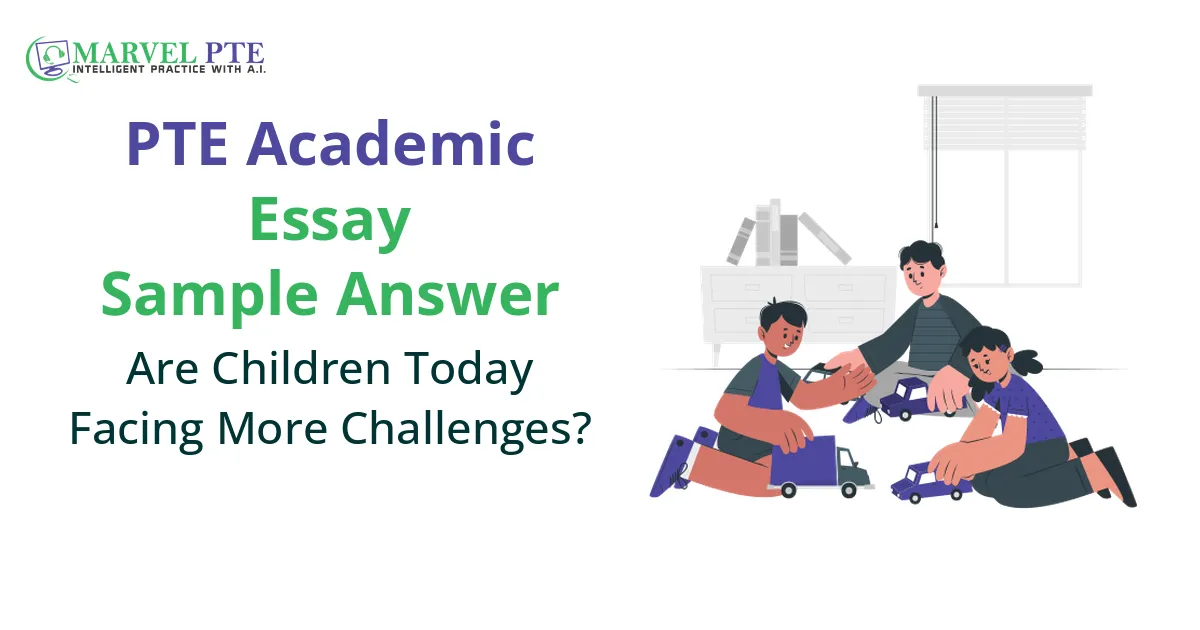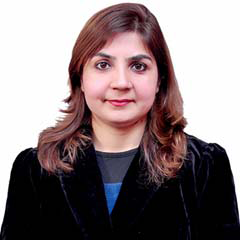
Essay Question
It is harder for children living in the 21st century than that in the past. How far do you agree with this statement? Give your opinions.
90-Points (9 Bands) Sample Answer for Essay
The debate on whether it is harder for children living in the 21st century than that in the past encompasses diverse viewpoints, revealing its advantages and drawbacks. This essay critically assesses these perspectives.
There are myriad arguments in favour of my stance. Recent research not only outlines the significance of studies as well as people, but also points out the importance of education and coping with vicissitudes. Besides, it provides a brief overview of expanding cultural understanding, followed by enhancing global perspectives. Examples of this can be seen all over the world, especially in affluent nations. Further, the implications of technological advancements on these views are significant, justifying widespread support for the idea that it is harder for children living in the 21st century than that in the past.
However, there are some arguments against the aforementioned view. Besides, its impact is far-reaching indeed as its influence extends to various facets of society, shaping not only individual experiences but also impacting the academic research landscape. Therefore, it is apparent why many are against the notion that it is harder for children living in the 21st century than that in the past.
In conclusion, while the viewpoint that it is harder for children living in the 21st century than that in the past presents a complex array of advantages and disadvantages, my analysis leads me to firmly support the notion that its benefits substantially outweigh the drawbacks.
Notice! In light of the November 2024 update, the status of templates has been altered.
Will I be able to score with this PTE Academic Essay Sample Answer?

You can confidently use this Essay Answer in the PTE Academic exam with similar results. You can even try it for yourself right now, click the link below and check immediately. Remember to type it all out, rather than copy pasting, as it will help you in getting prepared.
Template used in this Essay Sample Answer
You can even try memorising the whole template before typing it. Here is the template for AGBS essay-type. There are two types of PTE essays: AGBS and PS. Both templates have similar structure, with some differences in text to make the content more suitable to the essay-type.
Agree Disagree / Both Sides Template
The debate on whether TS* encompasses diverse viewpoints, revealing its advantages and drawbacks. This essay critically assesses these perspectives.
There are myriad arguments in favour of my stance. Recent research not only outlines the significance of studies as well as people, but also points out the importance of education and coping with vicissitudes. Besides, it provides a brief overview of expanding cultural understanding, followed by enhancing global perspectives. Examples of this can be seen all over the world, especially in affluent nations. Further, the implications of technological advancements on these views are significant, justifying widespread support for the idea that TS*.
However, there are some arguments against the aforementioned view. Besides, its impact is far-reaching indeed as its influence extends to various facets of society, shaping not only individual experiences but also impacting the academic research landscape. Therefore, it is apparent why many are against the notion that TS*.
In conclusion, while the viewpoint that TS* presents a complex array of advantages and disadvantages, my analysis leads me to firmly support the notion that its benefits substantially outweigh the drawbacks.
*Now, with the above template, you only have to add one phrase (a TS), which almost looks like a sentence.
What is TS?
A Topic Sentence (also known as TS) is a concise statement that introduces the main argument in a templated essay. In this way, most of the essay content is fixed, and only the TS needs to be written. The TS ensures the essay stays focused on the topic while maintaining a positive or neutral tone.
Example TS for the current essay:
'it is harder for children living in the 21st century than that in the past'
What makes this TS suitable?
The TS "it is harder for children living in the 21st century than that in the past" fits the essay topic well because it directly addresses the statement presented in the prompt. This TS clearly states a viewpoint that suggests children today face more challenges compared to those in previous times. By using the phrase "harder for children," it highlights the difficulties faced by the younger generation, which is the central idea of the topic.
The TS is grammatically correct, presenting a complete thought that makes sense. It avoids complex language and focuses on the comparison between children today and those in the past. The sentence structure is clear, with a straightforward subject and predicate, ensuring that the reader understands the point being made.
Key terms such as "children," "21st century," and "the past" are included, which are essential to the topic. These keywords help to establish relevance and show that the TS is directly related to the essay question. By clearly stating that it is harder for children today, the TS sets the stage for discussing various reasons and examples that can support this argument, making it a strong foundation for the essay.
Overall, the TS effectively captures the essence of the essay topic, paving the way for exploring the challenges faced by children in the modern world compared to their counterparts from earlier times. This alignment with the essay prompt enhances the clarity and focus of the response.
Important Words for Relevancy + Content Scores
A TS needs to have words that are related to the essay-topic, and here is a list of such words and phrases that you can use to make your own TS. All of these words and phrases are directly related to the text of essay prompt, thus giving you several ideas for creating your own TS.
- Harder: Harder means more difficult or challenging. For example, children today may find it harder to focus on studies because of the many distractions from technology.
- Children: Children are young human beings, typically under the age of 18. For instance, children today grow up surrounded by technology that changes how they learn and play.
- Living in the Century: Living in the century refers to being part of the current time period, which is marked by rapid changes and advancements. For example, living in the 21st century means experiencing new technologies and cultural shifts that shape daily life.
- Past Era: Past era refers to a previous time period in history. For example, children in the past era had different experiences, often playing outside more and using fewer electronic devices than children today.
- New Things: New things are recent inventions or ideas that have not existed before. For example, new things like smartphones and tablets have changed how children communicate and learn.
- Constantly Being Invented: Constantly being invented means that new inventions are created all the time. For example, technology is constantly being invented, leading to new ways for children to access information.
- Invented: Invented means to create something that did not previously exist. For instance, the invention of the internet has transformed how children learn and interact with the world.
- Exciting Inventions: Exciting inventions are new creations that inspire enthusiasm and interest. For example, exciting inventions like virtual reality can make learning more engaging for children.
- Enhancement: Enhancement refers to the improvement or increase in quality or value. For example, enhancements in educational tools can help children learn more effectively.
- Standards: Standards are accepted levels of quality or achievement. For instance, educational standards help ensure that children receive a certain level of knowledge and skills.
- Constant: Constant means something that happens all the time without stopping. For example, the constant flow of information from the internet can be overwhelming for children.
- Persistent: Persistent means continuing firmly or steadily despite challenges. For example, a persistent child might keep trying to solve a difficult puzzle until they succeed.
- Perpetual: Perpetual means lasting forever or for a very long time. For example, the perpetual development of technology means that new tools and gadgets will keep appearing.
Try to make your own TS using these suggested words. Then fill the above-mentioned template, and submit to our AI for evaluation. Keep making changes only in the TS till you get the full scores. This is the fastest way for you to prepare for the writing section of PTE Academic test.
Related Questions
- Choosing a Science Subject to Study
- Similar Friends or Different Friends: Which is Better?
- Reputation vs. Short-Term Marketing Strategies
- Does Travel Make Us Prejudiced?
- Self-Assessment by Company Workers: Good or Bad?
- Serious Films or Entertaining Movies?
- Skills Training for Convicts in Prisons
- How Has Communication Changed in the Last Decade?
- Retraining Older Professionals as Teachers
- Is Rapid Urbanisation the Solution to Unemployment?
